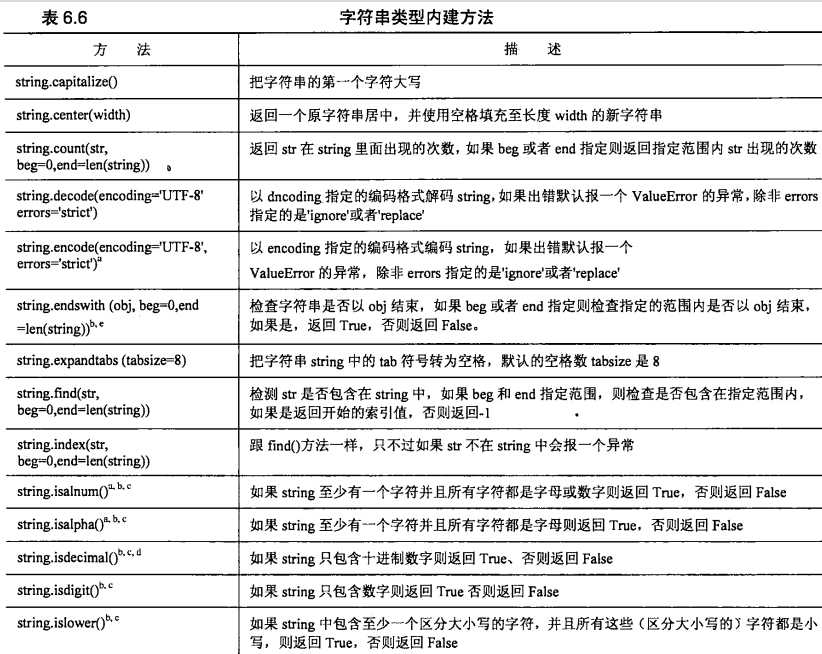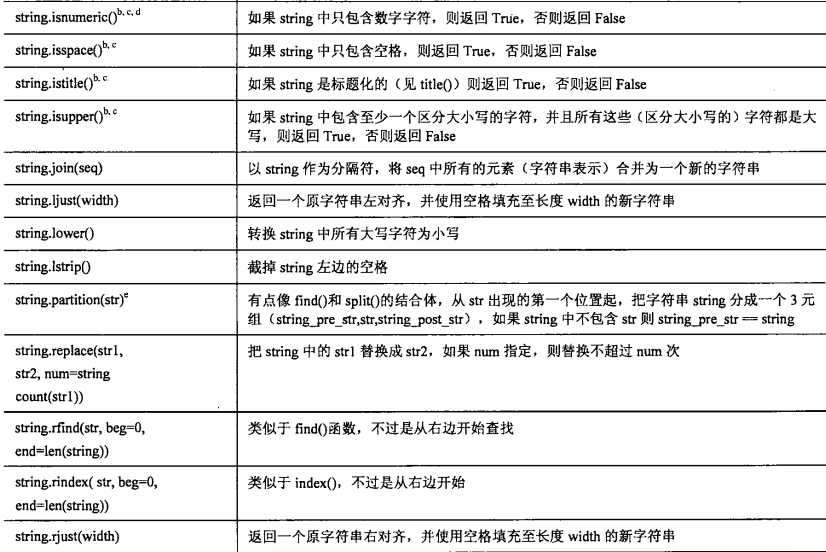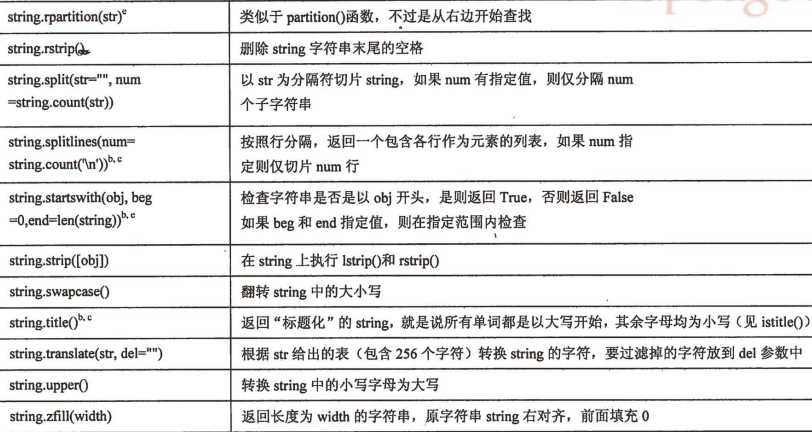标签:工厂 ddd pad ascii 包括 img ima com cin
转自 http://www.cnblogs.com/BeginMan/archive/2013/06/08/3125502.html
二、序列类型
包含字符串、列表、元祖。模式都一样,举一反三即可。如:
1、成员关系操作符(in / not in )
2、关于切片
|
1
2
3
4
5
6
|
s=[1,2,3,4]print s[::-1] #下标范围[0,0],步长是-1,则从后(4,包括4)往前切取所有,输出:[4, 3, 2, 1]print s[::-2] #下标范围[0,0],步长是-2,则从后(4,包括4)往前跳过2位切取,输出:[4, 2]print s[::] #下标范围[0,0],步长是0,则从前(1,包括1)往后切取所有,输出:[1, 2, 3, 4]print s[::2] #下标范围[0,0],步长是2,则从前(1,包括1)往后跳过2位切取,输出:[1, 3]print s[1:4:2] #下标范围[1,4],步长是2,则从下标为1(2)到下标为4(4)跳过2位切取,输出:[2, 4] |
要灵活运用。
三、关于序列类型的内建函数
如list()、tuple()、str()类型转换,实际上是工厂函数,浅copy的结果而并非真正的改头换面(转换)。
注意在string类型上应用list()、tuple()往往并不能得到我们想要的结果。
序列类型的内建函数一览表:
cmp()、len()、max()、min()、enumerate()、zip()、
四、Unicode字符串
1 >>> ‘hello‘+u‘ ‘+‘world‘
2 u‘hello world‘
五、字符串类型的内建方法
1、不常用的string模块
1 >>> import string
2 >>> string.uppercase
3 ‘ABCDEFGHIJKLMNOPQRSTUVWXYZ‘
4 >>> string.lowercase
5 ‘abcdefghijklmnopqrstuvwxyz‘
6 >>> string.whitespace
7 ‘\t\n\x0b\x0c\r ‘
8 >>> string.digits
9 ‘0123456789‘
10 >>> string.punctuation
11 ‘!"#$%&\‘()*+,-./:;<=>?@[\\]^_`{|}~‘
打开这个string.py模块,如下:
.......................................
# Some strings for ctype-style character classification
whitespace = ‘ \t\n\r\v\f‘
lowercase = ‘abcdefghijklmnopqrstuvwxyz‘
uppercase = ‘ABCDEFGHIJKLMNOPQRSTUVWXYZ‘
letters = lowercase + uppercase
ascii_lowercase = lowercase
ascii_uppercase = uppercase
ascii_letters = ascii_lowercase + ascii_uppercase
digits = ‘0123456789‘
hexdigits = digits + ‘abcdef‘ + ‘ABCDEF‘
octdigits = ‘01234567‘
punctuation = """!"#$%&‘()*+,-./:;<=>?@[\]^_`{|}~"""
printable = digits + letters + punctuation + whitespace
# Case conversion helpers
.......................................
不常用,很多功能可以自己模拟。
2、内建函数


join/split:http://www.cnblogs.com/BeginMan/archive/2013/03/21/2972857.html
标签:工厂 ddd pad ascii 包括 img ima com cin
原文地址:http://www.cnblogs.com/nolonely/p/6623004.html